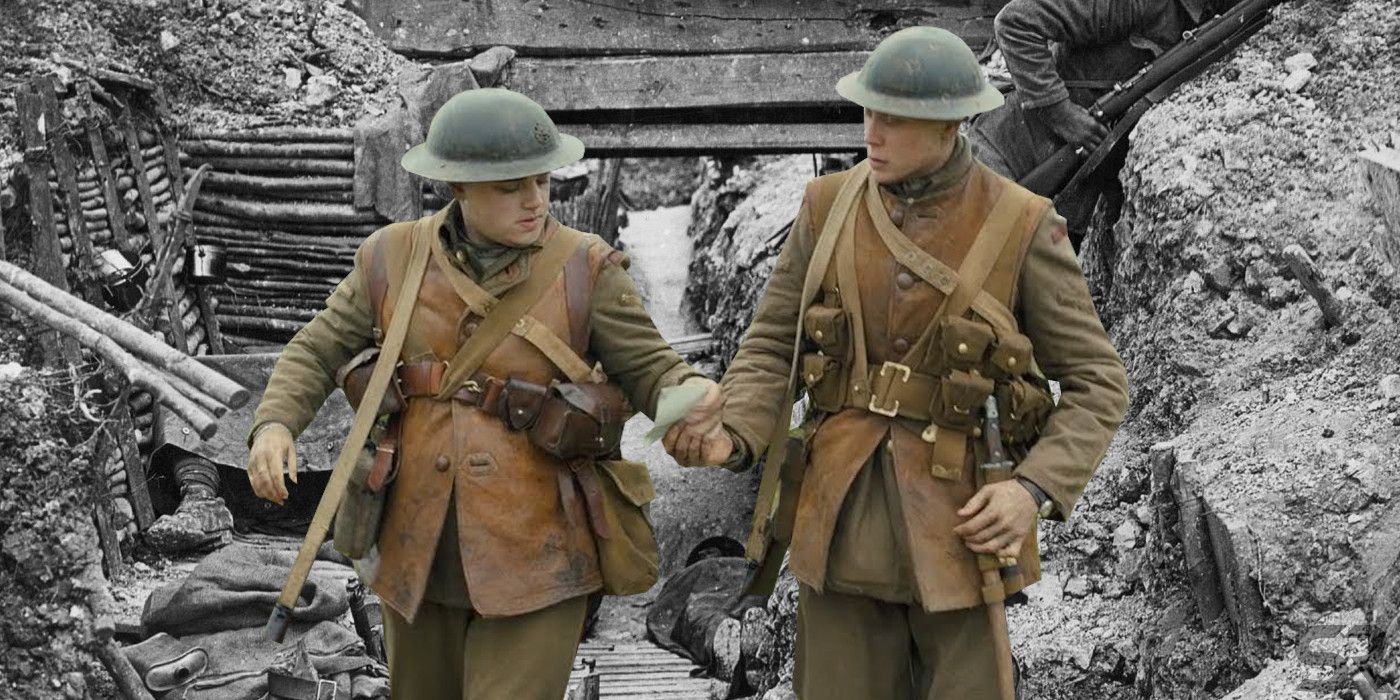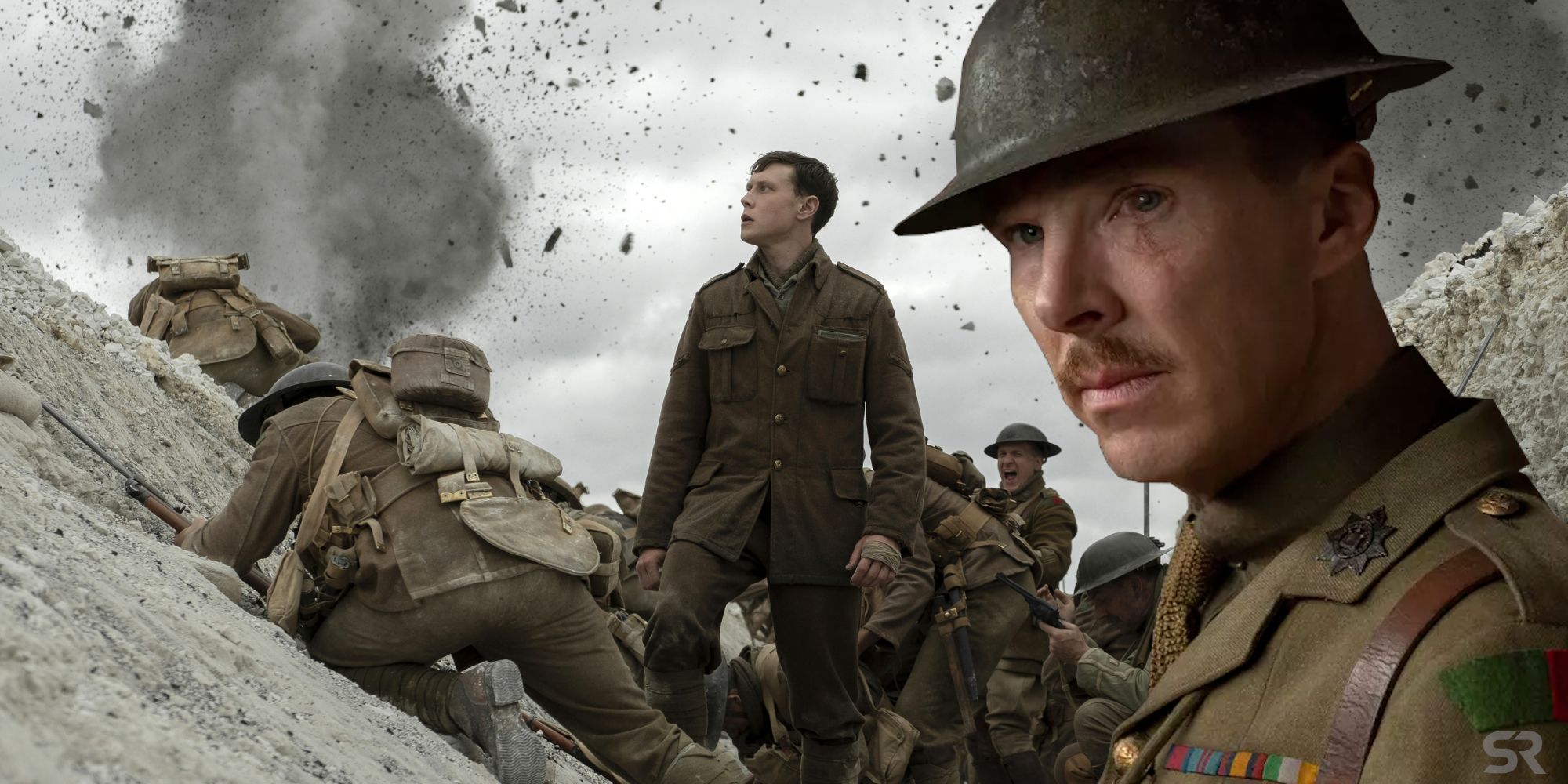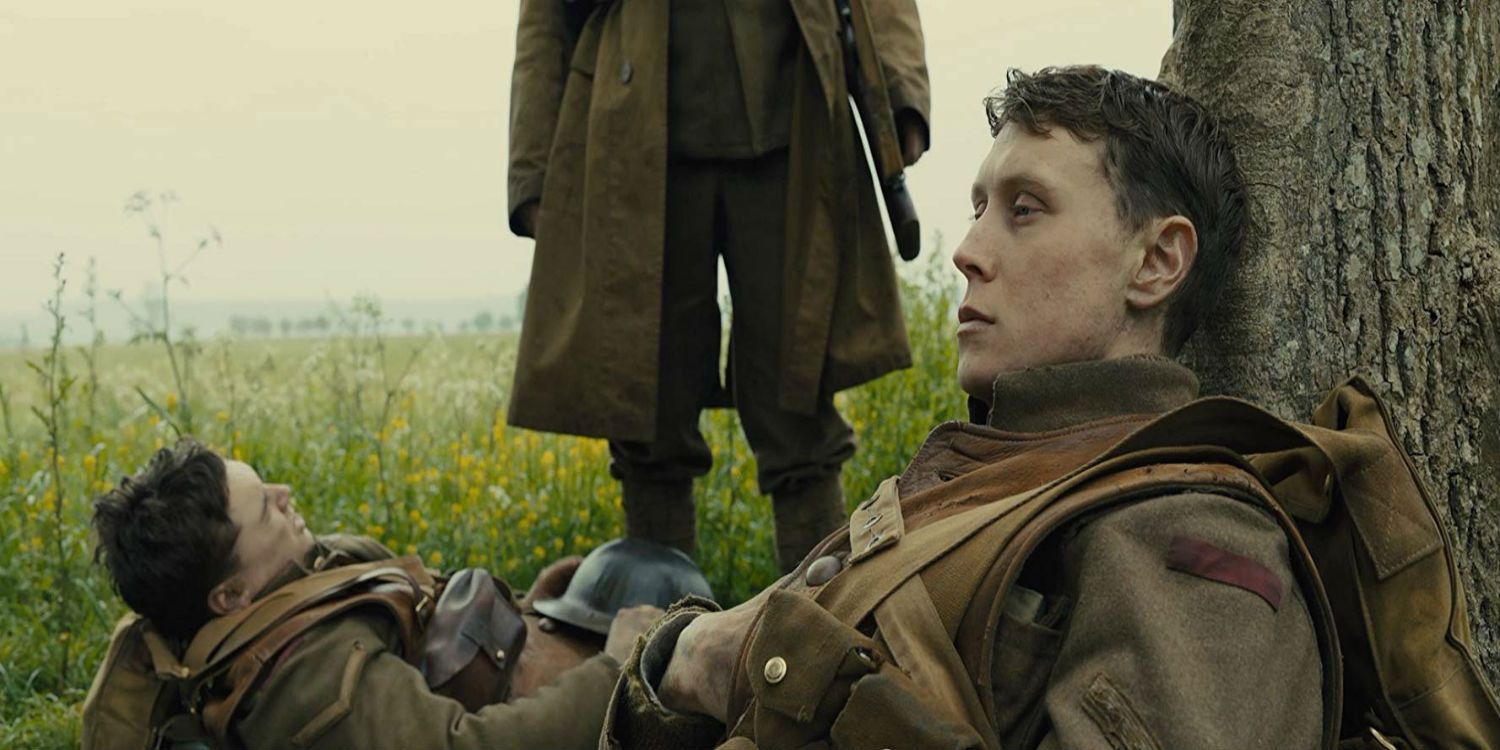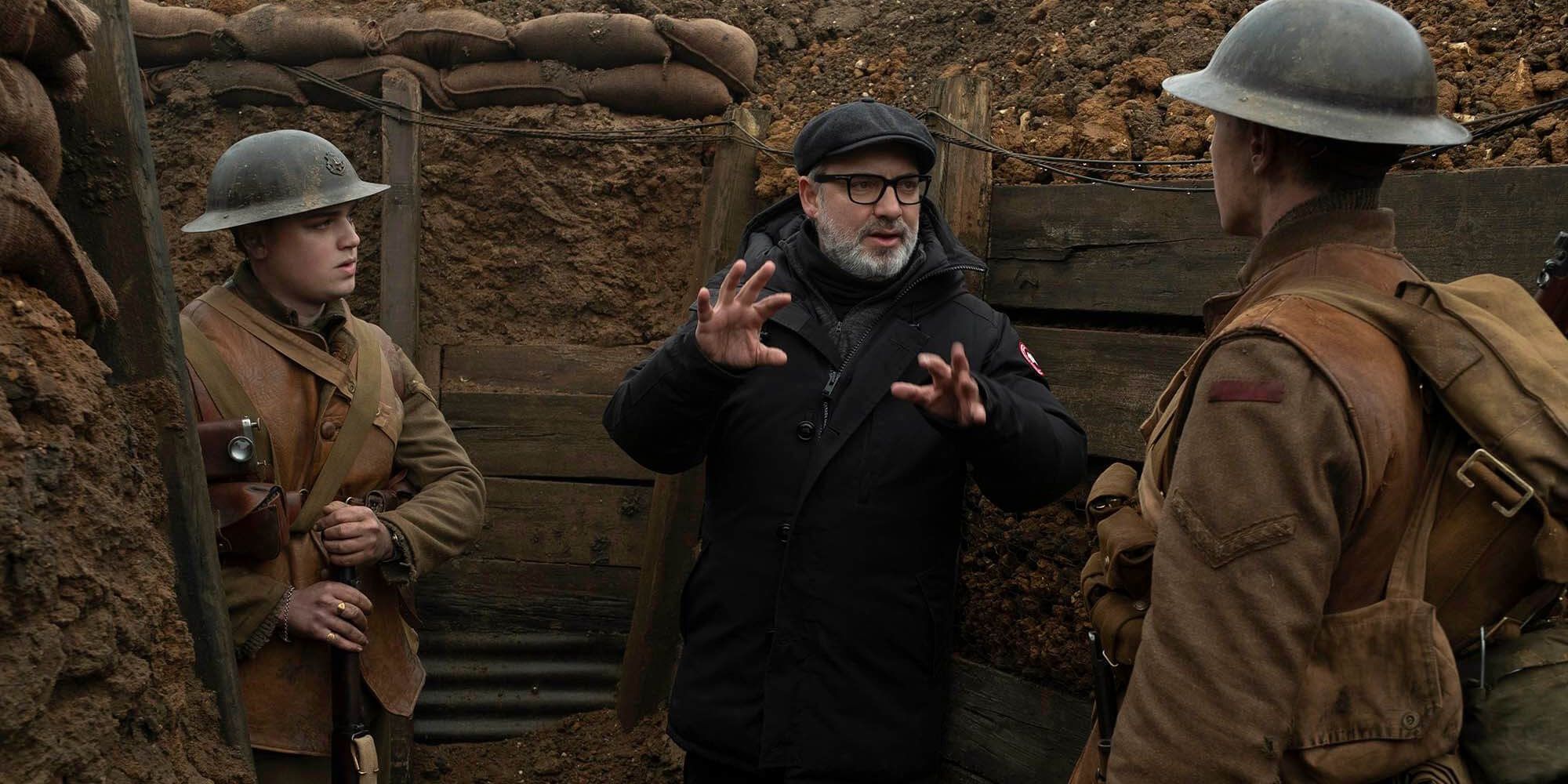Set in the very real global conflict World War I, some of the events depicted in 1917 were told to director Sam Mendes through childhood stories by his grandfather, Lance Corporal Alfred H. Mendes — but how much of the film is true, and how much of it was made up or exaggerated for the big screen? Mendes' movie, the British auteur's first since 2015's Spectre, is dedicated to the memory of his grandfather, a message runner for the country's army in WWI. Appropriately so, it follows the 24-hour trek of two brave soldiers who, after learning of another company's plans to inadvertently fall into a German trap, must cross enemy territory and deliver a warning message before 1600 unsuspecting soldier are killed.
The film itself has garnered critical praise – and two of the Golden Globes' top prizes – for its triumphing cinematography, helmed in large part by master Director of Photography Roger Deakins. Made to look as if it is one singular take, with no hard cuts throughout the entire movie, 1917 alludes to the ever-lasting brutality and intensity of warfare. Young actors Dean-Charles Chapman and George MacKay play the parts of Lance Corporals Blake and Schofield respectively, taking responsibility for the majority of the film's dialogue and action.
The lengths at which these two young men go are simply remarkable, and those military exploits are captured beautifully by a group of filmmakers and collaborators who know how to tell engaging and visually exquisite stories. With that in mind, here's the true story behind 1917.
1917 True Story Of Operation Alberich & Ambush
As 1917 begins, the British and German forces are engaged in a horrendous match of trench warfare, an inhumane combat method that flourished during World War I. With hundreds of men huddled between unstable barriers and dug-in hallways of Earth, each army would trade shots at one another with machine guns and heavy artillery. The space separating each nation's trench is what's known as "No Man's Land," and any venture out into its barren, crater-drenched arena is met with almost certain death.
According to Jonathan Casey, the Director of Archives and the Eward Jones Resaearch Center at the National WWI Museum and Memorial, the segements of the film dedicated to depicting the horrors of "No Man's Land" are "generally accurate." He says:
"These were incredibly unpleasant areas filled with disease, death and destruction and the movie shares those terrible conditions."
As Blake and Schofield are assigned their dangerous delivery mission (an order given to them by a general played by Colin Firth), they are given a thorough rundown of the situation at hand. A nearby British company, the one in which Blake's brother is stationed, is preparing an attack the next day that they believe will help bring the war to an end. As their leaders see it, the Germans have been on the run for a good chunk of time, and with one final attack, they think that they can squash the country's war effort in one day. Aerial surveillance, however, tells a different story: while it is true that the Germans have been retreating, it is only to get into a better position to attack the advancing British forces. In other words, it's a trap.
This remarkably coy setup is very much similar to one that the real German Army executed in World War I. It was called Operation Alberich, and it took place between February and March of 1917 (the film's events take place in April). During that time, German soldiers withdrew from their positions and relocated to the Hindenburg Line, a shorter, and easily-defendable position near the Aisne river in northeastern France.
While there was no big attack planned by the British army during this time – the closest thing to a conflict came in the form of a limited attack by France's Northern Army Group – the withdrawal was considered a major success for the Germans. Similar to what was seen in the film, Operation Alberich involved the dismantling of the architecture and machinery in the area: railways and roads were dug up, trees were knocked down, booby traps were planted, and buildings and towns were left in shambles. Though the excessive environmental damage that occurred during the operation was considered to be a propaganda disaster for Germany, Operation Alberich is regarded by historians as one of the more clever defense operations of the war.
Were 1917's Characters Real?
With all of that information in mind, it is difficult to consider the feasibility of Lance Corporals Blake and Schofield, as well as their heroic trek across the German front. And for the most part, that skepticism is well-based. Practically every character in the film, while based on real participants of the war – both heroes and villains – are nothing more than a figment of Mendes' and Wilson-Cairns' imagination. The same is true for the various cameoing officers played by Firth, Mark Strong, and Benedict Cumberbatch throughout 1917.
That being said, Blake and Schofield are very loosely inspired by Mendes' grandfather. During the real war, as a messenger, Alfred Mendes volunteered to take part in a very dangerous mission, somewhat similar to that taken in 1917. On October 12, 1917, hundreds of British soldiers were ordered to reclaim the Belgian village of Poelcappelle, which had been overtaken by the Germans. The attack, which took place in the pouring rain, was a disaster; 158 of the 484 surviving men in Alfred's battalion were killed, wounded, or left unaccounted for. The missing men were cast across miles of water-filled craters in No Man's Land.
When Alfred's commanding officer made an open request for a runner to locate the positions of the missing men and report back, Alfred volunteered, and went on the locate and rescue several survivors.
In his memoir, Autobiography of Alfred H Mendes 1897-1991, he wrote,
"in spite of the snipers, the machine-gunners and the shells, I arrived back at C Company's shell hole without a scratch but with a series of hair-raising experiences that would keep my grand and great-grandchildren enthralled for nights on end."
For his efforts and his bravery, Mendes was awarded a Military Medal.
What 1917 Makes Up
All this being said, it is clear that a great bulk of 1917 was fabricated. This is speaking, of course, in a literal sense. The elements of the story, including the characters, the environment, and the forlorn setting, however, are all drenched in the harrowing and historical realities of World War I.
So explains Mr. Casey:
"Like most non-documentary films, there were aspects of 1917 that were quite similar to real-world conditions, while other aspects were adjusted for dramatic purposes...as the team behind the film has shared, it was not their intent to recreate the movie based on factual events and the film should be viewed with that understanding.”
The film also takes no shame in trying to be the WW1 equivalent of Steven Spielberg's WW2 epic Saving Private Ryan: a land-sprawling journey fusing duty with family and fear. Like the 1998 production, 1917's Blake family plot line is largely fictional, though it is possible that something similar to this film could have occurred on the Western Front.
Screen Rant thanks Mr. Jonathan Casey and the research team at the National WWI Museum and Memorial for their historical insight and expertise.




